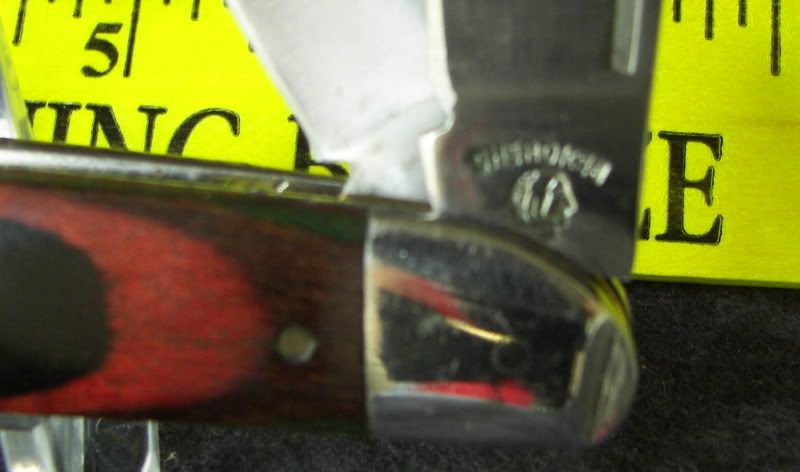100k wrote: ↑Sat Apr 17, 2021 7:11 pm
Hello,
There are some tricks Chinese knifemakers use to confuse collectors you must learn.
If it was made in Germany, you can see there is "SOLINGEN" or "SOLINGEN GERMANY" on the tang.
If there is "GERMAN STAINLESS" or "SOLINGEN STEEL" on the tang, don't buy it even it was really made in Germany.
You must know that Spain-made knives and China-made knives began to use these two marks in the late 1990s.
Chinese knife makers use ink to print the country of origin and this is the worst way to hide the country of origin.
It gives the dealer the opportunity to remove the "CHINA" off and pretend it was made somewhere else and mostly in the USA.
Japanese makers did the same thing during the 1970s, but that was a mistake because the importers wanted to sell them as knives made by American makers, but any imported merchandise have to show the country of origin by law.
Congress authored 19 U.S.C. § 1304 in order to specify the various rules and exceptions to the country of origin marking requirement and set out penalties for failing to mark and/or properly identify the country of origin of imported products.
If Cherokee knives were made in Germany, it has to be marked "Germany" unless it was made in the USA because USA products need not be marked the country of origin.
I believe that I have made this quite clear.
The importers may shift their makers from one country to another country.
As you can see, Spyderco knives had their knives made in Japan, Taiwan, and recently made in China.
Many evil sellers on eBay are fooling people around, e.g. Some brands were not made in Germany anymore and were made in China, Pakistan, or EU other than Germany, but these sellers keep telling the visitors that they are German brands made in Germany.
They bought these brands cheap and sell as expensive as German-made knives.
Don't buy a knife without a country of origin unless you are 100% sure.
I have always thought that the person or company buying the knife from a Chinese company could stipulate what they want on the knife. Anyone reading this with the right connections could order 500 made in China knives with Indiana Steel or whatever else they wanted stamped on it. The marketing people at SMKW are very clever and want to play slight of hand with a common name brand and then try to hide the fact that the knife was actually made in China. Remember a few years back when the U.S. Classics knives were out? I don't think SMKW had anything to do with these. Some were stamped Salt River, Kentucky and people at first assumed that is where they were made. Then it was discovered they were made in China to the buyer's specs. Additional info from I collector; Some other buyers also follow this practice.
Here is a little background on the US Classic line that was made in China.
The U.C. Classic is a unique knife. These high quality knives are faithful reproductions of the most sought after antique knives.
Earl Collins, a knife designer, has collaborated with a well-known knife collector from Kentucky. Earl chose his favorite knives from the 1920's, 1930's and 1940's. The knives were manufactured by Robeson, Cattaraugus, Remington, Boker, Case and a number of other well-known knife manufacturers. The original knives are worth a fortune and nearly impossible to find.
Mr. Collins then allows the U.S. Classics Manufacturer to dis-assemble the original knives and faithfully reproduce them, down to the smallest detail. The results are beautiful Antique Reproduction Pocket Knives that are reasonably priced. These knives have class, each is faithfully reproduced with long pulls, crimped and slanted bolsters and fancy shields in the handle. The bone handles have been jigged and dyed to match the old colors and textures. Some styles are already sold out and the price is going up, up, up. Until now, the only way to find a U.S. Classic knife was at a National Knife Show.
Each style is produced in a limited production run of 1200 knives.





